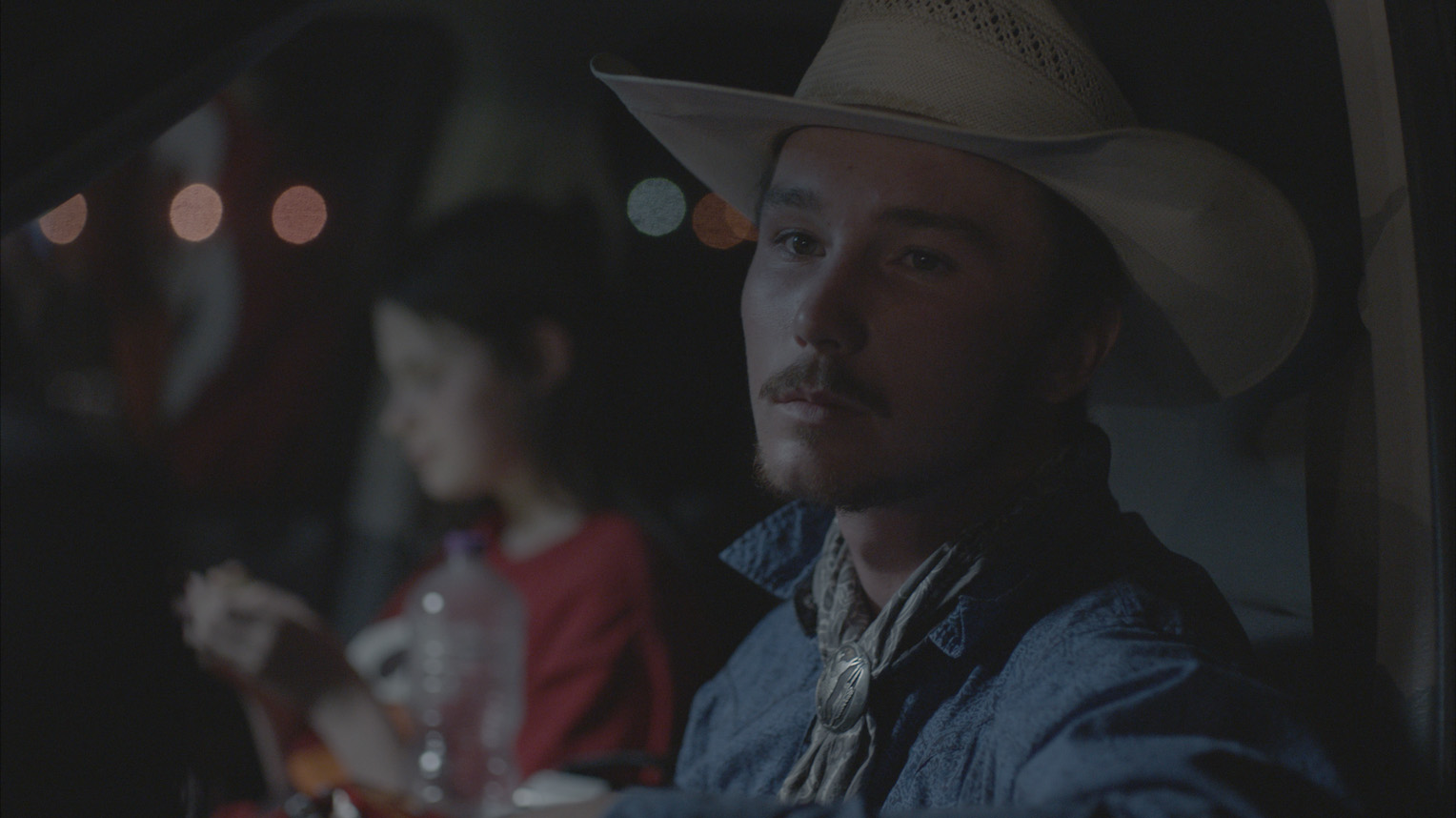The Rider is not your typical Western. True, Chloé Zhao’s indie film offers breathtaking views of vast plains and flaming sunsets. And the actors are real cowboys who know how to suit up for a rodeo. But The Rider doesn’t offer saloons and shootouts or any of Hollywood’s other tropes of the romanticized American West. Instead it draws the viewer into the life of one contemporary cowboy: his culture, his dreams, and the challenges he faces.
Zhao’s film, which has received several awards and nominations at international film festivals, focuses on saddle bronc rider Brady Blackburn, played by Brady Jandreau, and his struggle to overcome a traumatic brain injury from a riding accident. The film, Jandreau said, is “based on an actual injury I sustained on April Fools’ Day 2016.” Jandreau was flung off his horse and his skull was nearly crushed. Doctors put him in a medically induced coma for several days. At the beginning of the movie, the character he plays silently watches footage of Jandreau’s real-life accident on a smartphone.
The Rider follows Brady’s day-to-day routine as he recuperates. Despite doctors’ warnings, he cannot stay away from horses. He tries to convince his friends (and himself) that he will have a speedy recovery. Meanwhile, his family needs money, so Brady faces the pressure of finding work outside of ranch life. Each day brings him one step closer to the movie’s final, greatly anticipated rodeo.

Jandreau, a 22-year-old South Dakotan, has fair skin and short, dark hair, with a young man’s beard and mustache. In a phone interview with The Weekly Standard, he said it took some time for him to agree to star in a film based on his experience. “I wasn’t completely confident in the idea at first,” he said. “It was something that I had never even considered doing, frankly. It was definitely a whole different circuit.”
Despite his initial hesitancy, Jandreau trusted Zhao’s judgment. “The more she talked about it,” the more he became interested in sharing his story on the big screen. Zhao, a director, screenwriter, and producer from China, has made a handful of short films as well as one other feature-length movie, Songs My Brothers Taught Me (2015). Zhao had been interested in making a film about Jandreau even before his accident: She had become familiar with the Pine Ridge Indian Reservation and the surrounding area while filming Songs in 2013, and when visiting a ranch there in 2015 got to know Jandreau and became fascinated by his gift for training horses.
The movie still highlights Jandreau’s special connection with horses—there are scenes in which his character works with some that need to be trained and sold—but after his 2016 accident, Zhao’s vision for film shifted dramatically: She decided to focus on his struggles with his injury and his refusal to abandon cowboy life.
The film blurs the line between acting and authenticity. Not only does Jandreau play a character based on himself, but his father and sister, Tim and Lilly Jandreau, star with him in the film. The movie was shot in the Pine Ridge area and the cast includes many locals. Even the character Lane—a friend paralyzed in a riding accident whom Brady visits in heart-wrenching scenes—is not an actor but a real, paralyzed rodeo rider.
Zhao repeatedly uses silence to convey the intense emotion of Jandreau’s story. The first four minutes of the film have neither dialogue nor music. Several shots show Brady quietly bandaging his head, sitting on his front stoop, and riding across the plains. The recurring silence evokes Brady’s emptiness and frustration as he slowly recovers—but it also suggests contemplation as he searches for meaning and hope.
In one scene, Brady and his friends, gathered around a bonfire, talk about their love of bronc riding and about the injuries they have endured. “By NFL standards, I should be dead,” says one. “It’s all the same to a cowboy,” says another. “Ride through the pain.”
Brady’s desire to “ride through the pain” becomes a challenge as he faces other duties: He makes doctor’s appointments, plods through his workday at a grocery store, and affectionately cares for Lilly, his endearing and vivacious sister who has Asperger’s syndrome. In scenes like these, we see the tension between the quest for purpose and manliness as Brady and his friends conceive of them—that is, as strongly associated with bronc riding—and the need to care for health and family. A cowboy’s life, it turns out, is no rodeo.
Jandreau hopes The Rider will inspire others to seek meaning in their lives as well. The main message of the film, he said, is that people should “not take things for granted and . . . not let opportunities in life pass you by. Just because it’s not your plan doesn’t mean it’s not the future that’s laid out for you.”

